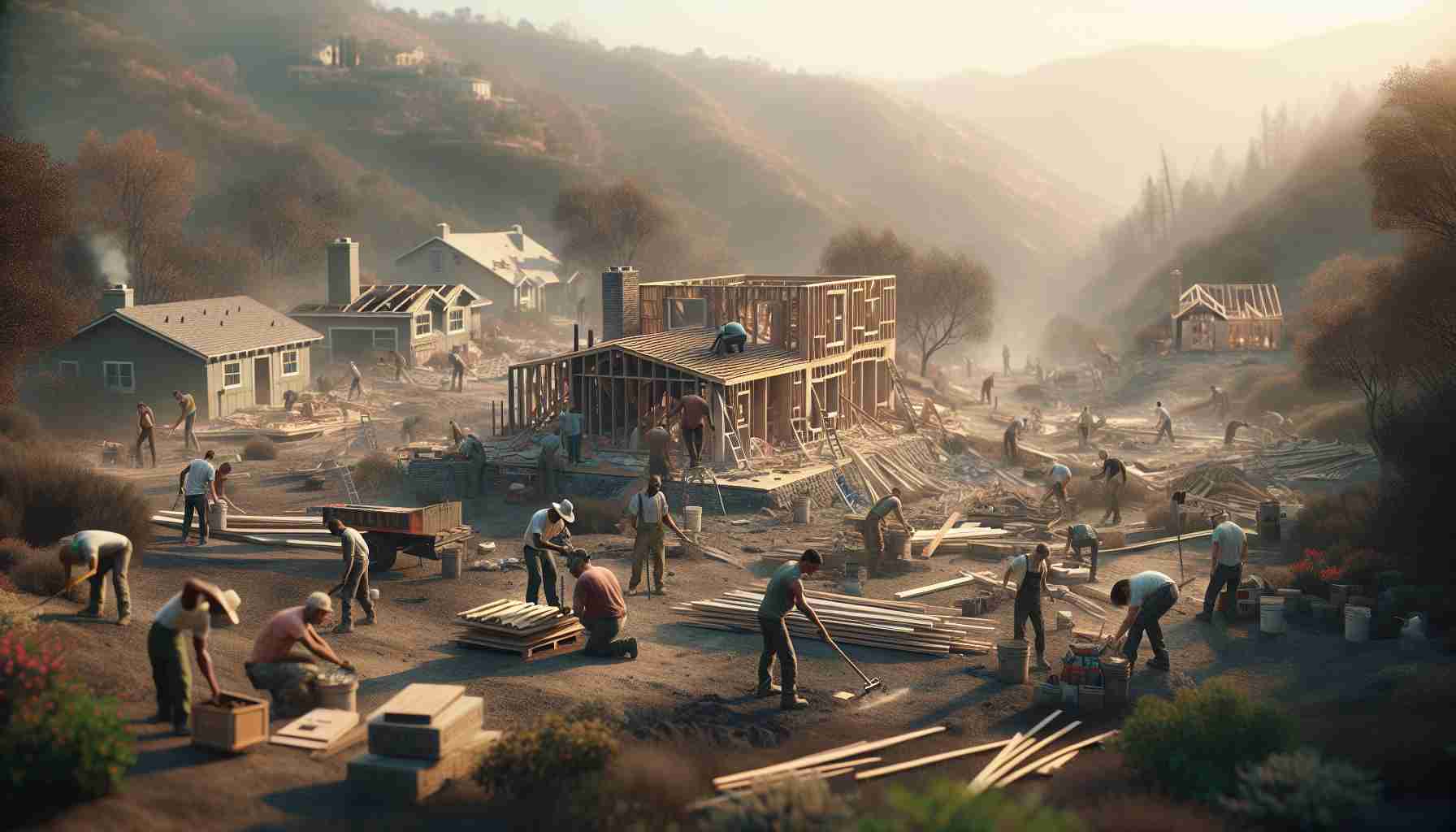The Toll of Wildfires
As devastating wildfires rage through Southern California, residents are beginning to confront the daunting reality of reconstruction. With support pouring in from diverse sources, ranging from influential Californians to Fortune 500 companies, the path to recovery is still fraught with challenges.
Determining the financial impact of fire damage varies widely, heavily influenced by a home’s size, the severity of the destruction, and existing insurance policies. A recent analysis revealed that the average cost for fire damage restoration hovers around $27,258, but can soar to an astounding $180,000 for homes suffering extensive devastation.
In areas like the upscale Pacific Palisades, the stakes are even higher, with median home prices exceeding $3 million, according to a J.P. Morgan report. Meanwhile, the aftermath of 2018’s Camp Fire showcased a stark contrast in Butte County, where the median home price was significantly lower, under $500,000.
The financial burden extends beyond mere repairs. Element Homes, a custom builder in California, reported that rebuilding costs in Malibu post-Franklin Fire could reach around $200,000 per 1,000 square feet. The fresh scars of nature’s fury reflect not only in the landscape but in the lives of homeowners who now face the complex journey of restoration.
Rebuilding After the Flames: The Challenges and Costs of Wildfire Recovery
Understanding the Wildfire Aftermath
Wildfires pose a significant threat not only to the environment but also to the financial stability and emotional well-being of the communities they affect. As Southern California grapples with the aftermath of these devastating events, residents are forced to navigate the steep costs of reconstruction amid challenges such as insurance claims, housing shortages, and rebuilding logistics.
Financial Implications of Fire Damage
The financial ramifications of wildfire damage are extensive and can vary drastically based on several factors including the home’s size, location, the extent of the damage, and the details of insurance coverage. While the average restoration cost hovers around $27,258, homeowners can see expenses escalate to $180,000 for more serious damage.
A detailed look at the housing market reveals stark contrasts. For instance, the median home price in affluent areas like Pacific Palisades can surpass $3 million, making recovery efforts not just financially exhausting but emotionally daunting as well. In contrast, Butte County, after the 2018 Camp Fire, had a median home price of under $500,000, highlighting the varying levels of financial impact across different regions.
Rebuilding Costs and Construction Challenges
The rebuilding efforts in heavily impacted areas, such as Malibu, have shown that construction costs can become overwhelming. Reports indicate that rebuilding expenses can soar to around $200,000 per 1,000 square feet, illustrating how fire damage translates into a significant financial burden for homeowners.
Pros and Cons of Rebuilding After a Wildfire
– Pros:
– Opportunity for Upgrade: Rebuilding allows homeowners the chance to modernize their homes with updated materials and technology.
– Community Support: Many residents receive assistance from local organizations and government programs aimed at supporting recovery.
– Cons:
– High Costs: The financial demands of rebuilding can be crippling, especially without adequate insurance coverage.
– Emotional Toll: The stress of the rebuilding process can take a psychological toll on individuals and families affected by the fires.
Insights into the Recovery Process
Successfully navigating the recovery process from a wildfire involves understanding the complexities of insurance claims, engaging reliable contractors, and often, dealing with zoning laws and permits that can delay rebuilding efforts. Homeowners should consider seeking professional assistance to evaluate their insurance policies thoroughly and ensure they are receiving the maximum benefits.
Sustainable Building Trends Post-Wildfires
As communities rebuild, there is an increasing trend towards sustainable construction practices. Homeowners are more frequently opting for fire-resistant materials and eco-friendly designs to mitigate the risk of future wildfires. Innovations such as fire-resistant siding, ember-resistant vents, and firebreak landscaping are becoming common in rebuilding efforts to enhance resilience against potential future wildfires.
Conclusion and Future Predictions
As the trends in recovery from wildfires continue to evolve, it’s clear that the financial, emotional, and physical toll on communities will linger long after the flames are extinguished. Future predictions suggest that with the increasing frequency of wildfires driven by climate change, communities will need to prioritize disaster preparedness as a crucial element of urban planning and housing development.
For homeowners and communities looking to rebuild after devastating wildfires, thorough planning and an understanding of the economic landscape will be essential steps in the recovery journey.
For more insights on wildfire recovery and rebuilding strategies, visit California Government.
